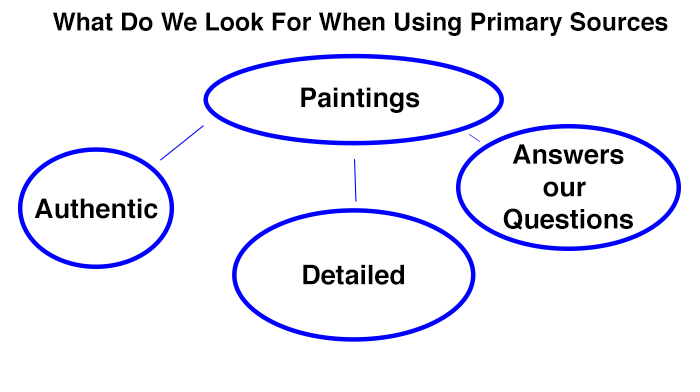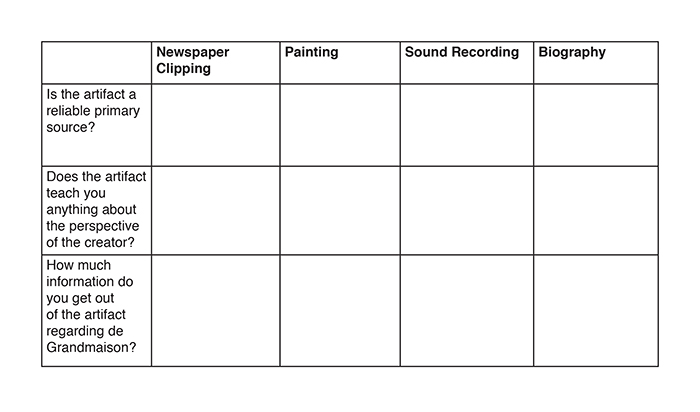Activity 1
Introduce students to this image of the extinct “megalodon”. This picture was taken in the 1940s by a German U boat crew of this aquatic creature that is a 64ft long ancestor to the shark.
Confess to students that this image is a fake and was recreated using computers to doctor the original image of the German boat.
Introduce students to the idea of a primary resource – a source that was created at the time of the event. Ask students to think about the scenario: If they are historians in the year 2050, what primary sources might you use to find out about the lives of teenagers in 2014? Ask students to make a list.
Activity 2
Choose one kind of primary resource brainstormed by the class and put it at the center of a web. Ask students to now brainstorm what kinds of things they should look for when using primary sources as a resource. What makes the resource good? What makes it a weaker resource?
Create a web with their ideas. You may want to use the megalodon as an example and put “authenticity” down as the first web point.
Activity 3
Introduce students to who Nicholas de Grandmaison was. Create with the class or provide students with a check list relating to the primary sources available on this man. Have students go through the provided primary sources looking for richness of source material, reliability and perspective and rank each source on a 1-5 scale for each in regard to the life of de Grandmaison.
Primary Sources:
• Sound Recording – Audograph recording 4-Joe Calf child, Herbert Lawrence, and Jack Son Cat
• Portrait – Riding at the Door (Itsoksi-ksisto-kitopi)
• Newspaper clipping – NDG07_304
• Biography – Portrait of an Indian By N. De Grand Maison, A.R.C.A. (Boy Chief), 24 January 1951
Example items on the checklist may include:
A printable PDF version can be found here.
Have students go through stations until they have ranked each resource provided.
NOTE: Students may need to be introduced to the idea that the language used in the sound recordings is not what you would hear today. A discussion on why that is would be appropriate.
Students may also need an example of how First Nations people were often depicted in paintings at the time, to better understand the validity of what de Grandmaison was painting.
Activity 4
Have students critically assess the sources through the following questions:
• Choose one resource, what would be the biggest challenge when using this resource for research?
• Choose a resource. What kind of topic could you be researching for this resource to be most useful?
• How could one of these resources help further your knowledge on what has been learned already in this class?
• What does the sound recording tell us about Nicholas de Grandmaison’s perspective on First Nations people.
• What can paintings tell us about First Nations people?
• Why should we preserve primary sources?
Assessment:
Suggested assessment would be to use student responses in activity four to assess comprehension of critical thinking skills and their use when researching or viewing material. Student checklists could be used formatively for the same purpose.

